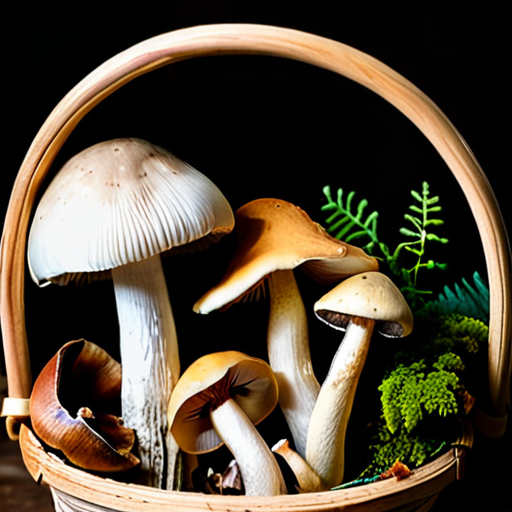The Fascinating World of Mushrooms: A Comprehensive Guide

Introduction
When it comes to the fascinating world of mushrooms, few topics are as captivating as their unique characteristics, diverse uses, and potential health benefits. From the familiar button mushroom to the prized morel, these organisms have been a part of human culture for centuries. In this blog post, we will delve into the world of mushrooms, exploring their definition, types, habitats, identification, edible varieties, medicinal properties, and safety guidelines.
What Are Mushrooms?
Mushrooms are the fruiting bodies of fungi, belonging to the kingdom Fungi. They are an essential part of the natural world, serving as a food source for many animals and helping to break down organic matter in the environment. With over 14,000 known species, mushrooms can be found in almost every corner of the globe, from the frozen tundra to the hottest deserts.
Types of Mushrooms
There are several types of mushrooms, each with its unique characteristics and uses. Some of the most common types include:
- Edible mushrooms, such as oyster mushrooms, morel mushrooms, and shiitake mushrooms, which can be used in a variety of dishes.
- Poisonous mushrooms, such as the death cap and destroying angel, which can be deadly if ingested.
- Wild mushrooms, which are found growing naturally in the wild and often require expert identification to ensure safety.
Habitat and Environment
Mushrooms can be found in a wide range of habitats, from forests to grasslands to urban areas. They thrive in environments with high humidity and temperatures between 40°F and 60°F (4°C and 15°C). Some species of mushrooms are also found in symbiotic relationships with tree roots, forming mycorrhizal networks that help to break down organic matter.
Identification and Characteristics
Identifying mushrooms can be a challenging task, even for experienced foragers. However, there are several characteristics that can help to distinguish between different species, including:
- Cap shape and size
- Stem shape and size
- Gills or pores
- Spore print
It is essential to exercise caution when attempting to identify mushrooms, as some species can be poisonous.
Edible Mushrooms
Many types of mushrooms are edible and can be used in a variety of dishes. Some popular edible mushrooms include:
- Oyster mushrooms
- Morel mushrooms
- Shiitake mushrooms
- Chanterelle mushrooms
Edible mushrooms can add flavor and texture to a wide range of recipes, from soups and stews to salads and stir-fries.
Medicinal Mushrooms
Certain species of mushrooms have been found to have medicinal properties, including:
- Reishi (Ganoderma lucidum)
- Chaga (Inonotus obliquus)
- Oyster mushrooms
- Morel mushrooms
These mushrooms are often used in traditional medicine and have been shown to have anti-inflammatory and immune-boosting properties.
Safety and Precautions
When foraging for wild mushrooms, it is essential to exercise caution and follow safety guidelines. Some species of mushrooms can be poisonous, so it is crucial to:
- Identify mushrooms correctly
- Avoid eating mushrooms that are past their prime or have been contaminated
- Be aware of lookalike species
Conclusion
Mushrooms are a fascinating and complex group of organisms, offering a wide range of benefits for human health and the environment. From edible mushrooms to medicinal mushrooms, these organisms have been a part of human culture for centuries. By understanding more about mushrooms and their unique characteristics, we can appreciate the importance of these organisms in our ecosystem and work to protect them for future generations.
“The best way to get started is to quit talking and begin doing.”
Walt Disney
